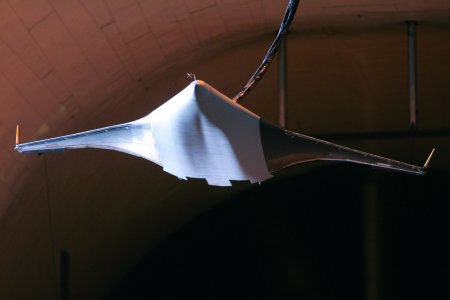Boeing and NASA will flight test the X-48B, a 6.4m (21ft)-span, 8.5% scale model of a blended wing body (BWB) configuration, next year at the US space agency’s Dryden Flight Research Center in California.

The remote-controlled vehicle will be powered by three turbojets and will test flight-control laws. Boeing is developing the BWB in co-operation with the US Air Force Research Laboratory as a multi-role military aircraft.
The flight testing will follow statically mounted windtunnel tests of a second 8.5% model in NASA Langley Research Center’s full-scale tunnel next February, focusing on aerodynamic forces and moments. “Cranfield Aerospace in the UK is building the two vehicles. They should be finished in the next month or so,” says Langley’s flight dynamics principal investigator, Dan Vicroy.
Tethered free-flight tests of a 3.66m-span, 5%-scale X-48B model in the full-scale tunnel were performed in September. Vicroy says such tests are rare and were last performed eight years ago.
Simulated airspeeds were low and the vehicle’s maximum stall angle was investigated. The February tests will also examine the BWB’s departure characteristics.
Researchers were “pleasantly surprised” by how well the model flew. Vicroy says the vehicle did not have a natural tendency to “pitch back” in the stall and expected pitch problems did not materialise.
NASA could have used complex control laws developed by Boeing, but found its own simpler laws worked with the BWB’s trailing-edge control surfaces. The 5% scale model was made of a carbonfibre composite to ensure the weight and inertia characteristics in roll, yaw and pitch accurately modelled those of a full-sized BWB.
ROB COPPINGER/LONDON
Source: Flight International























